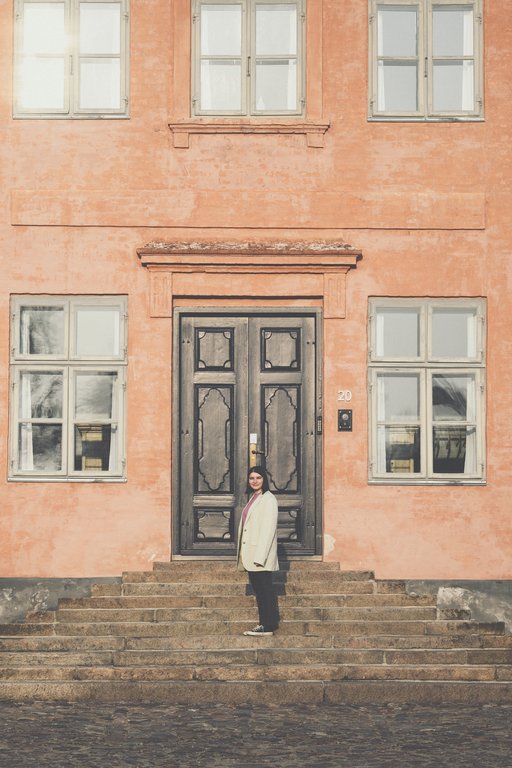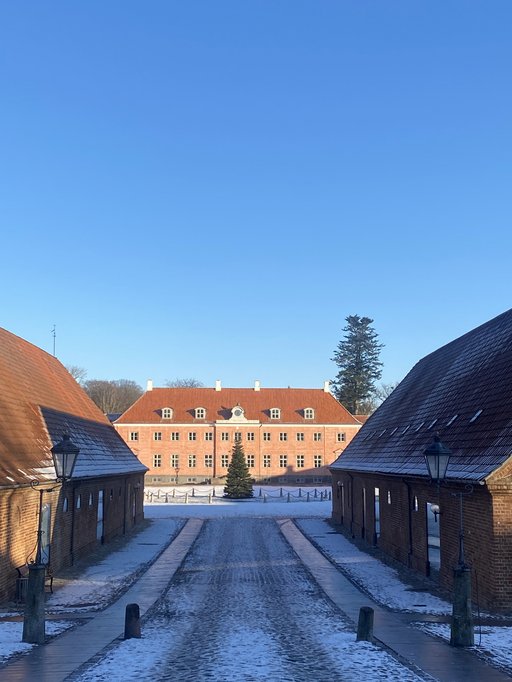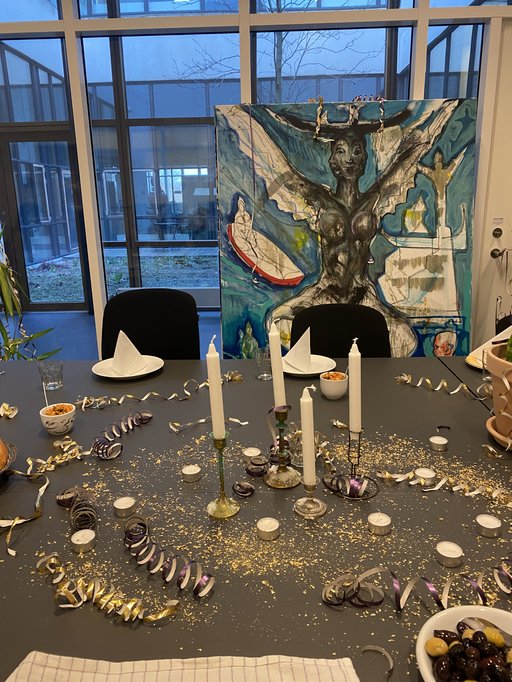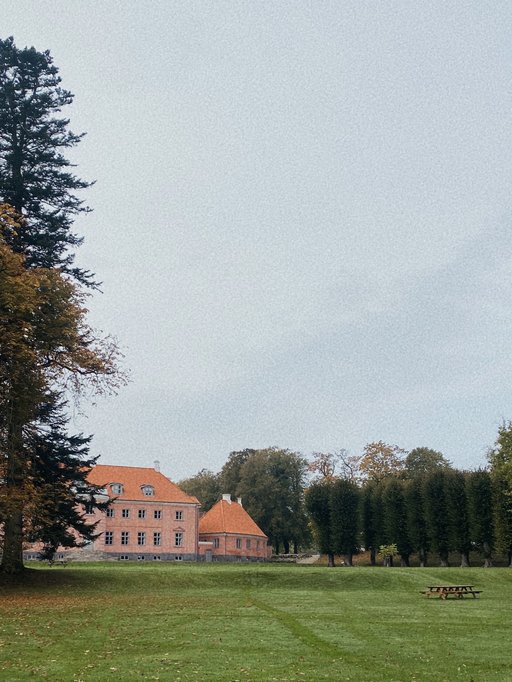My Studies – Visual Anthropology
When I was looking for master’s degree programmes, I was trying to find a programme that could combine my different study interests and background.

I studied Film and Media Studies for my bachelor’s and did a double major in Sociology (let’s say a second bachelor’s degree), therefore, I thought that Visual Anthropology programme could be really relevant for me to combine my knowledge in two different disciplines under a melting-pot.
Nevertheless, honestly, until I came across to the study programme page on Aarhus University’s website, I did not really hear about the discipline of Visual Anthropology before. The people I have been talking to, who have been asking me about what I am studying haven’t heard of it either. Funny fact, whenever I am being asked what I study, I need to make some explanation of my studies almost every single time. :D
The more I did research on the programme, the more I found out that it is very interesting. On mid-way through with my research, I realised that Aarhus University has actually one of the best Visual Anthropology programmes in the world! 🤩
What is Visual Anthropology?

Visual Anthropology, MSc. programme aims to teach students of anthropology on conducting audio-visual research, thinking visually and working with different audio and visual methods. While studying with people on a specific topic, which really can be anything, any part of the society, this study programme enforces students to think visually and creatively. Normally, the Visual Anthropology track builds on a classical anthropological approach, studying human life, society, a small entity in the society, local or international organisations, working around its social and cultural forms and later on, encourages students to create visual products such as films, photo books, exhibition, digital media research, and what’s more. While learning about all these during the first semester, we also start to think of a fieldwork and the study area that the master’s thesis would like to engage with at the end of the first semester, around October or November. The study programme makes you think about your master’s thesis project very early on in the process as we need to conduct a five-month long fieldwork from the middle of the second semester. Therefore, we start developing ideas for master’s thesis project very early. Believe me, it is a blessing to know what you are going to do with your thesis quite earlier compared to the other programmes.
Programme Structure

The course “Contemporary Anthropological Themes:Visual Anthropology”, taught in the first semester, is divided into three different modules and research areas. This course is taught at the Eye and Mind Laboratory located at Moesgaard Museum, where students can organise their own film screenings and social gatherings. We even made a gala just before leaving for fieldwork at Eye and Mind, ate dinner together with the fellow classmates and made a screening of the visual products that we made during the first semester. 😊
The room is equipped with good computers, on which students can work on their film and/or visual products and edit them on editing software. During one of the first weeks of the programme, students receive a camera kit with which we can develop our skills and do several tasks with the filming. In each module, we had to create a visual product that would correspond to the respective module that we were studying.
When I took this course, the first module was called “Camera as a Cultural Critique” where we had many readings about the positionality of the camera, what can a camera do as a tool of a critique, also including hands-on workshop in ethnographic filmmaking and editing. At the end of this module, we needed to create a 5-minute-long short film about the topic we were interested and with people we had access to. In that regard, this assignment was incredibly creative where students were deciding what they would like to work with. The idea was of course, communicating anthropological knowledge through the medium of film.
In the second module of the course, which was entitled “Audio-visual and Collaborative Research Design”, we mostly worked around the idea that visual anthropology as an engine for experimental, collaborative fieldwork and research, and did mostly digital ethnography. For the assignment of this module, we needed to pick a phenomenon occurring on Internet and had to do online interviews with research participants, screen recordings and walks, and utilizing as many as digital elements possible in the numerous possibilities available on Internet.
The last module was about “Ethno-Aesthetics: Art and Anthropology”, which explored the relationship between art and anthropology, and the idea that how art can be used anthropologically. This module was consisted of many little exercises where everyone could develop an approach, which could be used for the last big assignment.
Throughout the semester, we also had several workshops about filming, camera and sound given by experts in their area.
Other Courses

Alongside the Visual Anthropology course that we take in the first semester, we also have a common “Advanced Anthropological Theory” course with General Anthropology track. In this course, we learn about advanced and contemporary theories that are relevant for the discipline of anthropology and could be used for our research.
In the second semester, we take a compressed and intensive course called “Ethnographic Methodology and Fieldwork Preparation”, which prepares us indeed for fieldwork. Throughout this course, we develop our ideas about our master thesis project and where we would like to hold our fieldwork. In this regard, students are very independent to choose what they want to study and where they want to go. During this course, we already exchange ideas with the lecturers and our supervisor about how to form our ideas and preliminary research questions before leaving to fieldwork to at least have an angle. For instance, I decided to a fieldwork internship at a Danish music and concert organisation, where I thought that my study interests would be present at my field. Some of my classmates went to Colombia, Portugal, Lebanon, Philippines, but most of them decided to conduct their fieldwork in Denmark. It is, of course, a personal preference to decide where you would like to do your fieldwork.
We are graded by our preliminary project description for “Ethnographic Methodology and Fieldwork Preparation” course. Then, we need to start our fieldwork latest by mid-April’ish. Then two months later, we write a first field report about the things happening in the field. This exam is a pass/fail exam, where we show that we are on a good track and what kind of access we have in the field, what are the daily activities that we are joining, what are the emerging themes in the field.
Furthermore, we also write a second field report in the beginning of the third semester, which is actually at the very end of the fieldwork. With this report, we start becoming more concrete about our projects, our analytical framework and our collected data and material from fieldwork.
We are almost approaching to the end of the programme; we take two different courses in the third semester. One of them is a very practical course called “Anthropology beyond academia” where we take 3 days of a full lecture and discuss what anthropologists could contribute to job market and what we can actually do with our competencies.
In the second course, “Advanced Anthropological Analysis”, we start working with our collected material from fieldwork and slowly start writing little parts for the thesis, which could be used for our thesis as a sketch in the spring semester. This course helps a lot in terms of drawing a sketch of our thesis, and with writing homeworks and workshops; we get more familiar with our material and moreover with our thesis.
What I tell now about the programme and courses are, of course, my experience when I took these courses, so make sure to check the study programme page to get updated information. I am just telling all these to sketch out the programme a bit more detailed. 😊 https://masters.au.dk/anthropology/#visualanthropology
Coming to an end – becoming an anthropologist
As I mentioned earlier, during this programme, we are in good hands with our project. In most programmes, students decide their thesis topic in the last semester or at the end of the third semester. This definitely does not happen in Visual Anthropology programme. I feel like we have a better grip of our own project and topic, but also knowing what we want to do afterwards.
The thesis for Visual Anthropology track consists of a 40-paged written thesis and an accompanying visual anthropological product (film, photography, museum installation, or multimedia). Currently, I am in the process of starting to write my master’s thesis and sort out my material and data from the fieldwork. I applied for a thesis-writing seat at the library at Moesgaard. So, there is also a possible study desk for those who are bad at working at home. :-)
